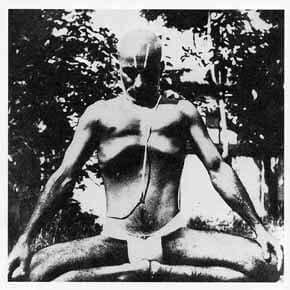Bandhas Part 2/4
Uddiyana Bandha is the second yogic muscular lock that occurs at the bottom of the rib cage. Uddyiana bandha is popularized, but largely misunderstood, I believe. Uddiyana means upward flying and bandha means energy seal, so this interlock moves energy up the spine. This opposed the mula bandha (root) lock descending down to the base of the spine. The Uddiyana bandha is important for inversion work, floating into handstand, jump backs from crow, etc. Think of anything where you are moving the trunk large distances as requiring the bandha lock. This is why lots of movements occur at the end of an exhale, because your abdominals are compressed towards your spine making for spinal stability during movement.
Uddiyana bandha is not a hollowing of the stomach! For some reason, people think that caving your stomach in supports your spine, but this is not true. Uddiyana bandha is far more of an engagement of the abdomen through breathe. Uddiyana bandha can be practiced in a wide variety of positions and the only time the stomach should be caved is after an exhale while doing prana-yama. Otherwise, Uddiyana bandha is simply the upward abdominal engagement of the obliques.
Most people will refer to the abdominal lock by hollowing the stomach in breathing exercises, but in truth, the muscular lock is a complex anatomical binding that allows for inversion and stabilized trunk movement in space.
The term Uddiyana bandha refers to the following muscles: the illiopsoas (hip flexor, walking muscle), the obliques, and the diaphragm. Together, these muscles are what allows you to walk, run, and move in space. This is why you will find so much yoga focusing on the psoas: think crescent lunge, low lunge, backbends, and hamsting lengthening in pyramid or ardha hanumanasana. a lot of yoga is geared towards making the psoas more malleable and flexible so that the body has more freedom for movement.
Patthabi Jois knew the importance of the bandhas, which is why the ashtanga system makes such heavy use of them. These interlocks can be attended to in each pose to allow for alignment, energetically and physically, of the spine. But to be honest, I’m fairly disappointed at the lacking of knowledge in this area. The uddiyana bandha is one of the more important muscle groups in the body and will take your practice to the next level will mindful work. Yes, even if you are already jumping into handstands.
This concludes part 2 of the bandha series. Check back soon for the Jalandhara bandha, part 3!
If you haven’t gotten a chance, check out part 1 here

